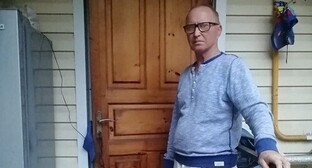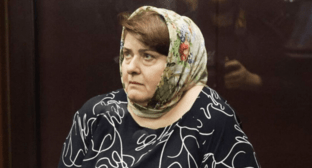28 April 2003, 13:17
Pyatigorsk
In Stavropol kray (region), kray subordination, 196 km south-east of Stavropol; balneal and mud-cure resort of All-Russian importance in the group of health resorts of Caucasian Mineral Waters. Located in Ciscaucasia, on the Stavropol Upland, at the height of about 500 m, on the left bank of the Podkumok River (an inflow of the Kuma River) and slopes of Mount Mashuk and its spur, Mount Goryachaya. The climate is moderately continental. Winter is mild; the temperature in January averages to -4?С; thaw with mist and ice-slick are frequent; snow cover is unstable. Spring is early, with frequent rains and mists (mainly in the first half). Summer is very warm and dry; July temperature averages to about 22?С. Autumn is warm, dry, long; frost begins in the middle of October. Precipitations of about 500 mm a year, primarily in April - October. Railway station in the Mineralny Vody - Kislovodsk branch 25 km south-west of Mineralny Vody. A motor road junction, Including the Rostov-on-Don - Makhachkala - Baku (Azerbaijan) highway. Population (1992 est.) 132 thousand (1897 est.) 18 thousand, (1926 est.) 41 thousand, (1939 est.) 62 thousand, (1959 est.) 70 thousand, (1970 est.) 93 thousand, (1979 est.) 110 thousand.
The area of curative "hot waters" on the slopes of the mountains of Маshuk and Goryachaya was developed since 1780, after Konstantinogorskaya fortress had been founded 4 km from it, on the bank of the Podkumok River (in the second half of the 19th century, it was demolished). Those coming for treatment lived in a fortress or directly near the springs, in temporary tents, booths and covered wagons. In 1803, a special governmental decree ordered to establish a health resort at the site of the present Pyatigorsk. However, equipment and building of the Goryachiye Vody health resort (its other name being Goryachevodskoye settlement or Goryachevodsk) began only from the 1813-1814s (wooden swimming pools and baths, first wooden residential houses). In 1830, the health resort was given the present name (after the five-headed Mount Beshtau (the Turkic for five mountains), located near Pyatigorsk and the status of an okrug (district) city of Caucasian oblast (province); in the 1866-1920s, it was within Теrek oblast.
In the 1st half of the 19th century, accomplishment of the city and the health resort was promoted by figures of military and civil administration at the Caucasus, including Generals А.P. Yermolov, G.А. Yemanuel, A.A. Velyaminov, as well as Prince M.S. Vorontsov, who was Vicegerent at the Caucasus at that time. In 1847, Management of Caucasian Mineral Waters was established in Pyatigorsk. In 1863, Doctor S.А. Smirnov, who was the Director of the Management for a long time, organised the first Russian balneal society in Pyatigorsk. An important part in development of the health resort in the early 1890s was played by driving a railway. At the beginning of the 20th century, the city was electrified, and a tram line connecting the centre of the health resort to the other part of Pyatigorsk and the railway station was driven.
At the 19th and the beginning of the 20th centuries, the health resort was visited by a lot of outstanding figures of Russian culture, including A.S. Pushkin, N.I. Gnedich, V.G. Belinsky, the surgeon N.I. Pirogov, L.N. Tolstoy, F.I. Shalyapin. М.Y. Lermontov was treated here in 1820, 1825, 1827 and 1840 (his impression about the life in Pyatigorsk and Kislovodsk were used in his story Knyazhna Mary (Princess Mary); in 1841, Lermontov spent last months of his life at Caucasian Mineral Waters, and on July 15 (27) he was killed in a duel at the northern bottom of Mashuk (at present, the site of the duel is marked by an obelisk with a high relief of the poet).
In 1920, Pyatigorsk saw establishment of the Balneal Institute (at present referred to as Pyatigorsk Research Institute of Balneology and Physiotherapy), which became a guidance centre of health resorts of Caucasian Mineral Waters. In 1931, the health resort was visited by about 19 thousand people. During the Great Patriotic War of 1941-1945, Pyatigorsk opened 17 military evacuation hospitals. Pyatigorsk developed most intensively after being liberated from Nazi occupation (lasting from August 9, 1942 to January 11, 1943). Fascist troops caused heavy damage to the city and the health resort.
In 1991, the Pyatigorsk health resort had 10 sanatoriums, 4 boarding houses and 5 sanatoriums - preventoriums. The number of people who underwent a cure and had a rest at the health resort within a year totalled to about 170 thousand.
The basis of sanatorium treatment in Pyatigorsk is mud-bath procedures. Mineral springs of Pyatigorsk (totalling to more than 40 springs, their diversity makes the health resort unique not only in Russia, but also in the world; it is considered to be a natural museum of mineral waters) are traditionally divided into several groups depending on chemical composition of the water, radioactivity, etc. Waters of the oldest Lermontov (No. 1 and No. 2) and National springs are thermal (45?C and 47?C) calcium-sodium carbonic sulphate-hydrocarbonate-chloride with mineralisation about 5.3 g/l. The same types are waters from the Novaya inclined borehole No. 2 and borehole No. 16. These waters are used for baths (Lermontov, Pushkin, Pirogov, Narodny baths), as well as for peroral treatment (the well-room in Tsvetnik Park, the new drinking gallery) and bottling (under the name of Mashuk). A large group of waters is Pyatigorsk narzans; they are carbonic waters of different mineralisation and temperature: warm narzans (boreholes No. 4, 7, 24) with temperature from 25 to 35?C; hot narzans (boreholes No. 19, 33) with temperature 60?C and 52?C; cold narzans (Krasnoarmeysky spring No. 1) with temperature 23-24?C; all these narzans are used for peroral treatment. Brine-alkaline springs (Nos. 14, 17, 20, 30, 35), giving sodium carbonic hydrocarbonate-chloride waters, are also used for peroral treatment. Waters of borehole No. 30 are close in composition to water Yessentuki No. 17. Pyatigorsk also has 9 springs of radon waters of different radioactivity, primarily with low mineralisation (less than 3 g/l). Their chemical composition is mainly that of carbonic waters. Waters of these springs, as well as radon waters of the Mount Beshtau deposit (hole No. 113) supply 2 radonopathical establishments. Radon waters are used primarily for baths.
Since 1886, fangotherapy at the health resort uses sulphide silt mud of Tambukan Lake, located 11 km south-east of Pyatigorsk.
Favourable climatic conditions in summer and early autumn allow using them for climatotherapy.
Owing to diversity of natural medical factors, treatment in Pyatigorsk is indicative to patients with diverse illnesses, including diseases of the stomach and the intestine, the liver and bile tracks, the nervous system, the locomotor system, kidneys and urine tracks, the cardiovascular system, the skin, gynaecological illnesses. In addition, Pyatigorsk provides treatment of children with consequences of the birth trauma, neurologic diseases, as well as diseases of digestive organs.
The industry of Pyatigorsk is primarily oriented at service of the health resort. Flavouring industry(a meat-processing plant, a winery, a dairy, a brewery, a confectionery), light industry (clothing, shoe, carpet factories). Machine industry and metal working (PО Pyatigorskselmash specialises in machines and equipment for aviculture; a special automobile equipment works, an electromechanical plant, etc.); a chemical factory. Institutes of pedagogy, foreign languages, pharmaceutics, a branch of Stavropol Polytechnic Institute. A Theatre of Musical Comedy. The museum of local lore (founded in 1905 on the basis of collections of the Museum of the Pyatigorsk Department of the Caucasian Mining Society; collections: ancient arms, numismatics, archaeological findings, etc.; the collection of pictures of Russian and foreign artists of the 18th - 19th centuries), the State Memorial Reserve of M.Y. Lermontov (created in 1973, includes a small house kept as Lermontov's museum with the adjacent quarter of houses of the first half of the 19th century, etc.). A resort exhibition (open in the middle of the 1920s on the basis of the so-called Geognostic Museum, existing since 1866). Annual days of poetry dedicated to М.Y. Lermontov.
The planning structure of Pyatigorsk is divided into the lower (western) part with residential building-up, industrial enterprises, public and administrative buildings; and the upper (eastern) part, at the western bottom and on the southern slope of Mount Mashuk, with resort and balneal establishments. The resort area was built up in the 1820-30s in the style of classicism, mainly by the architects Giovanni and Giuseppe Bernardacci: the building of Restoration with mighty Ionic portico (1825, designed by O.I. Sharleman; destroyed by Nazi troops in 1943, reconstructed in the 1950s, at present referred to as the Institute of Balneology); the so-called house for deprived officers with the commandant's office (1826, the present Resort polyclinic); Lermontov (former Nikolayev) baths (the 1826-1831s); a rotunda pavilion Eolova Arfa (Aeolian Harp) on the spur of Mount Mashuk (1831); Diana's Grotto with Dorian columns (the 1830-1831s) etc. In the same part of Pyatigorsk, there is a wooden Mikhailov gallery in the Moorish style built by the architect S. Upton (the 1846-1848s; destroyed by Nazi troops in 1943, rebuilt in stone in 1955, the present Resort Exhibition) and the stony Academicheskaya (former Elizavetinskaya) gallery in the style of the late classicism (the 1848-1851s), as well as Tsvetnik and Yemanuel Parks (laid by Bernardacci brothers in the 1820-1830s), buildings of the Yermolov (1880), the Pushkin (former Novosabaneyev, the 1901-1902), the Pirogov (1914) baths, the pre-engineered metal Lermontov gallery (mounted and open in Pyatigorsk in 1901, the present Concert Hall; the similar Pushkin gallery is in Zheleznovodsk), the building of the theatre (Art Nouveau, 1915, architect A.I. Kuznetsov), etc. The lower part of the city preserved its orthogonal layout of the 1820s, residential and public buildings of the middle of the 19th - the beginning of the 20th centuries, including the monumental building of the therapeutic mud bath (neo-classicism, 1910, architect М.М. Peretyatkovich). Modern residential microdistricts are erected in the northern (Belaya Romashka), the north-west (at Mount Post), the western (Skachki) parts of the city. The resort area is noteworthy for buildings of sanatoriums Leninskiye Skaly (1965), Tarkhany (1975), the boarding house Iskra-1 (1968), the Upper Radonpathic Establishment (1971). A monument to M.Y. Lermontov (1889, sculptor А.М. Opekushin).
The southern slope of Mashuk has a 20-m deep doline called Proval, at the bottom of which there is a small lake. To climb Mashuk, there is a cable and a foot road. At the centre of health resorts of Caucasian Mineral Waters, on slopes and at bottoms of Mounts Beshtau, Mashuk, Zmeyka, Razvalka, Zheleznaya, Ostrov and Medovaya, there is a Mount Beshtau forestland (mainly ash, oak, hornbeam, beech).




